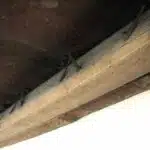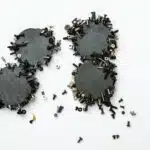An air mattress is an essential item for anyone who loves camping, hiking, or outdoor adventures. It is also a useful item to have in your home, especially when you have guests staying over. However, air mattresses are not invincible and can develop leaks or punctures over time. A damaged air mattress can be a frustrating experience as it can ruin your sleep and cause discomfort. In this article, we will discuss how to patch an air mattress effectively using simple steps that anyone can follow.
As an air mattress repair specialist, I understand the importance of having a comfortable sleeping surface while on the go. I have seen many people struggle with damaged air mattresses and end up throwing them away due to their inability to repair them. However, repairing an air mattress is easier than most people think, and it can save you both money and time in the long run. In this article, we will guide you through the process of patching an air mattress using readily available tools and materials. Whether you want to fix a small puncture or a large tear in your air mattress, our step-by-step guide will help you restore it to its original condition so that you can enjoy a good night’s sleep anywhere you go.
Identifying The Damage
An air mattress is a wonderful invention that provides comfort and convenience to those who use it. However, over time, it may succumb to wear and tear, resulting in common damages such as punctures and leaks. As an air mattress repair specialist, it is important to identify the specific damage before proceeding with any repairs.
One of the most common damages that an air mattress can experience is a puncture. This occurs when a sharp object pierces through the surface of the mattress, causing air to escape rapidly. Another type of damage that can occur is a leak, which is caused by gradual deflation due to small holes or tears in the material. Identifying these damages requires keen observation and attention to detail.
Fortunately, repairing an air mattress does not always require professional help. There are DIY repair tips available for those who wish to fix their own mattresses at home. However, before attempting any repairs, it is crucial to determine the nature and extent of the damage first. Doing so will ensure that proper repair techniques are used and prevent further damage from occurring during the repair process.
With proper identification of damages in mind, one can now proceed with gathering the necessary tools and materials needed for repairing an air mattress without making further mistakes or damaging the product more than it already has been damaged.
Gathering The Necessary Tools And Materials
- A patching kit is typically required to patch an air mattress, and should include an adhesive, scissors, patch, and ruler.
- Other materials such as a tarp, pencil, bucket, and air pump should also be prepared.
- Additionally, a measuring tape, soap, sponge, cloth, needle, and thread are necessary for completing the patching process.
- It is important to have the correct tools and materials on hand before beginning the repair process.
- Careful measurements should be taken and marked with the pencil before cutting the patch.
- The patch should be applied to the mattress according to the instructions provided in the patching kit.
Patching Kit
In order to patch an air mattress, one must first gather the necessary tools and materials. Among these is the patching kit, a crucial component in repairing any punctures or leaks on the mattress. Depending on the type of air mattress being repaired, different types of patches may be required.
The patching kit typically includes adhesive patches made specifically for air mattresses, as well as a glue or sealant to ensure a secure bond between the patch and the mattress surface. It is important to carefully follow the instructions provided with the patching kit in order to ensure proper application and maximum effectiveness.
While adhesive patches are often the most effective and reliable option for repairing air mattresses, there are also alternative methods available such as using duct tape or other types of sealants. However, it is important to note that these alternatives may not provide a long-lasting solution and could potentially damage the mattress further if not applied correctly. Therefore, it is recommended to use only approved patches from a reputable manufacturer for optimal results when repairing an air mattress.
Adhesive
As an air mattress repair specialist, one of the crucial tools in repairing punctures or leaks on a mattress is adhesive. There are different types of adhesive that one can use in patching up an airbed, each with its own pros and cons. It is important to select the right type of adhesive depending on the material of the air mattress being repaired.
One type of adhesive that is commonly used for patching up air mattresses is contact cement. This type of adhesive provides a strong bond and works well in joining materials that have been cut or shaped. However, it is not ideal for use on foam-based air mattresses as it can cause a reaction that will eat away at the foam material. Another type of adhesive is silicone-based sealants which are perfect for repairing punctures on vinyl-based mattresses because they remain flexible even when the temperature changes. However, this type of adhesive may take longer to dry compared to other types.
The most recommended type of adhesive for repairing air mattresses is polyurethane-based adhesives. These adhesives provide a strong bond and work well on various materials including PVC and vinyl-based mattresses. They also dry quickly and are resistant to water, making them ideal for outdoor activities where moisture may be present. Overall, it is important to select an appropriate adhesive based on the material being repaired and follow instructions carefully to ensure maximum effectiveness in patching up an airbed.
Scissors
As an air mattress repair specialist, one of the necessary tools for repairing punctures or leaks on a mattress is a pair of scissors. However, it is important to select the appropriate type of scissors based on the material being cut. There are different types of scissors that can be used for patching an air mattress such as fabric shears, paper scissors, and utility or craft scissors. Fabric shears work well with thicker materials like vinyl-based mattresses while paper scissors are suitable for thinner materials like plastic films. Utility or craft scissors are versatile and can work with different types of materials.
It is also crucial to keep your scissors sharp when working on air mattress repairs. Dull scissors can cause uneven cuts and may even damage the material being repaired. To sharpen your scissors, you can use a sharpening stone or a honing rod. Simply hold the sharpening tool firmly in place and run each blade along it at a slight angle several times until it becomes sharper. It is recommended to sharpen your scissors before every use to ensure precision in cutting.
In summary, selecting the appropriate type of scissor and keeping them sharp are essential in repairing an air mattress effectively. By using the right tool for the job and maintaining its condition, you can ensure that your cuts are clean and precise, resulting in a better-quality repair job overall.
Deflating The Air Mattress
When it comes to air mattresses, deflation is a common issue that can be caused by a variety of factors. One of the most common causes of deflation is punctures or tears in the mattress material. This can occur due to sharp objects or rough handling during use or storage. Additionally, exposure to extreme temperatures can cause the air inside the mattress to expand and contract, leading to leaks.
Prevention is key when it comes to avoiding deflation issues with your air mattress. One important tip is to always handle your mattress with care, especially when inflating or deflating it. Avoid dragging it on rough surfaces or placing it on sharp objects. Another helpful tip is to store your mattress in a cool, dry place away from direct sunlight and extreme temperatures.
Temporary solutions for a deflated air mattress include using duct tape or patch kits to cover any punctures or tears. However, these fixes are not always reliable and may only last for a short period of time. For long-term fixes, it’s recommended to purchase a new air mattress or seek professional repair services from an experienced technician. Proper maintenance and care can also help extend the lifespan of your air mattress and prevent future deflation issues.
When dealing with a deflated air mattress due to punctures or tears, it’s important to clean the affected area before attempting any repairs. This will ensure that the patch adheres properly and doesn’t come off easily over time. In the next section, we’ll go over some tips for cleaning your air mattress before attempting any repairs.
Cleaning The Affected Area
- Vacuuming the affected area is the first step in air mattress repair, as it removes dirt and particles that could prevent proper adhesion of the patch.
- After vacuuming, the area should be wiped down with a clean cloth to ensure all dirt and dust is removed.
- Patches should be applied to the affected area in layers, beginning with a patch of the same material as the air mattress and ending with a patch of a different material to ensure a secure bond.
- The patches should be applied in a circular motion to ensure even coverage and to help create a tight bond.
- Pressure should be placed on the patch after application to ensure the patch is firmly adhered to the air mattress.
- All edges of the patch should be sealed with an adhesive to ensure a long-lasting seal.
Vacuuming
To properly patch an air mattress, it’s important to thoroughly clean the affected area prior to applying any adhesive. Using a vacuum can be a helpful tool in this process. By using a vacuum, you can remove any debris or dust that may interfere with the adhesion of the patch.
When finding the leak location, start by inflating the air mattress and listening for any hissing sounds. Once you’ve located the leak, mark it with a piece of tape or marker so you don’t lose track of it. Next, deflate the mattress and clean the area around the leak using a vacuum.
Using a vacuum is an essential step in cleaning the affected area before applying a patch to your air mattress. By removing debris and dust from around the leak location, you can ensure that your patch will adhere properly and reduce the likelihood of further damage to your air mattress.
Wiping Down
Cleaning the affected area of your air mattress is a crucial step in repairing leaks. Dust and debris can prevent adhesion, leading to further damage or even failure of the patch. In addition to using a vacuum to remove loose particles, it’s also important to wipe down the area with a damp cloth. This will ensure that any remaining dirt or oils are removed, allowing for optimal adhesion.
When wiping down the affected area of your air mattress, be sure to use a gentle cleaning solution. Harsh chemicals can degrade the material and weaken its structural integrity. A mixture of mild soap and water is typically sufficient for cleaning most air mattresses. However, if you’re unsure about what type of cleaning solution to use, consult the manufacturer’s recommendations.
Regular maintenance is key to preventing future leaks and prolonging the life of your air mattress. In addition to proper cleaning methods, it’s important to store your air mattress properly when not in use. Keep it in a dry, cool location away from direct sunlight or extreme temperatures. By following these maintenance tips and properly cleaning any affected areas before patching leaks, you can enjoy years of comfortable sleeping on your air mattress.
Applying Patches
After thoroughly cleaning the affected area of your air mattress, it’s time to apply patches. While patching a leak may seem like a straightforward process, there are some troubleshooting tips and tricks that can make the process go more smoothly. For instance, if you’re having trouble locating the source of the leak, try inflating the mattress and listening for any hissing sounds. This can help pinpoint the area that needs to be patched.
When it comes to applying patches, there are several alternatives to consider. One popular option is using adhesive vinyl patches specifically designed for air mattresses. These typically come in various sizes and shapes and can be cut to fit your specific needs. Another advanced technique is using a hot glue gun to apply a layer of glue around the puncture before placing the patch on top. This creates an even stronger bond between the patch and mattress material.
No matter which method you choose, it’s important to carefully follow the instructions provided with your chosen patching material. Make sure that the area is completely dry and free of debris before applying any adhesive. And always allow ample time for the adhesive to dry before using your air mattress again. By taking these steps and exploring different patching techniques, you can extend the life of your air mattress and avoid future leaks.
Applying The Patching Material
To apply the patching material, you will need to choose an adhesive that is appropriate for the type of material your air mattress is made of. There are several types of adhesives available in the market, including rubber cement, vinyl cement, and cyanoacrylate glue. You should select an adhesive that is compatible with the material of your air mattress for optimal results.
Once you have chosen the appropriate adhesive, you can begin to apply pressure to ensure that the patch adheres properly. This can be done by placing a heavy object on top of the patch or by using a roller to press down firmly. Applying pressure helps to create a strong bond between the patch and the mattress surface.
After applying pressure, it’s essential to smooth out any bumps or wrinkles in the patching material. You can use your fingers or a flat tool such as a credit card to smooth out any imperfections. This ensures that there is no air trapped under the patch which could cause it to lift or peel off over time.
Now that you have applied the patch and smoothed it out, it’s time to move on to pressing and smoothing the patch. This step is crucial as it ensures that there are no gaps between the patch and mattress surface allowing air leaks. By following these steps carefully, you can extend the life of your air mattress and avoid having to replace it frequently.
Pressing And Smoothing The Patch
Moving on to the next step, let’s discuss the pressing and smoothing technique for your air mattress patch. Applying pressure is crucial to secure the patching material onto the damaged area. Once you have placed the patch over the hole, use your fingers or a flat object to press it firmly into place. This will help remove any trapped air bubbles and ensure a tight seal.
After applying pressure, it’s time to perfect your smoothing technique. Use a straight edge or a credit card to smooth out any wrinkles or bumps in the patching material. This will help create a seamless surface on your air mattress and prevent any potential leaks from forming.
Before we move onto allowing the patch to dry, let’s briefly touch upon different types of patching materials that are available. There are various options such as adhesive-backed patches or liquid sealants. Adhesive-backed patches are easy to apply but may not be as durable whereas liquid sealants require more effort but offer stronger protection against punctures.
Now that we have discussed applying pressure and smoothing technique, it’s time to move onto our final step – allowing the patch to dry completely before using the air mattress again. This may take anywhere from a few hours up to 24 hours depending on the type of patching material used and environmental conditions such as temperature and humidity. Remember not to rush this step as premature use may cause further damage to your air mattress resulting in another round of repairs!
Allowing The Patch To Dry
After applying the patch, it is crucial to allow it to dry completely before inflating the air mattress. Different types of patches may require different drying times, so it is important to read the manufacturer’s instructions carefully. Generally, it is best to allow the patch to dry for at least 24 hours before using the air mattress again.
Best practices for allowing a patch to dry include placing the air mattress in a warm, dry area with good ventilation. Avoid placing the air mattress in direct sunlight or near sources of heat such as radiators or heaters, as this may cause uneven drying and damage the patch. It is also important not to place any weight on the air mattress while it is drying, as this can cause stress on the newly patched area and compromise its effectiveness.
Once you have allowed your patch to dry completely, you can begin reinflating your air mattress. This process should be done slowly and carefully, starting with a low volume of air and gradually increasing until you reach your desired firmness. By following these best practices for allowing your patch to dry, you can ensure that your air mattress remains fully functional and provides you with a comfortable night’s sleep for years to come.
Reinflating The Air Mattress
After allowing the patch to dry, it is time to reinflate the air mattress. Begin by removing any tape or adhesive residue left behind by the patch. This can be done using rubbing alcohol and a clean cloth. Once the area is clean and dry, use a manual or electric pump to inflate the mattress.
It is important to note that overinflation can cause damage to the air mattress, so make sure to follow manufacturer guidelines for proper inflation levels. As you inflate the mattress, check for leaks by running your hands over the surface and listening for any escaping air. If you feel or hear a leak, mark the spot with a piece of tape or marker and repeat the patching process.
If you continue to have issues with leaks or if the patch does not hold up, there are alternative solutions available such as liquid repair kits or replacement parts. However, it is important to keep in mind that these options may not be as reliable as patching and could potentially cause more damage in the long run.
Common mistakes when inflating an air mattress include using too much force on the valve, which can cause it to break, and not properly securing all connections between hoses and pumps. By following proper inflation techniques and regularly checking for leaks, your air mattress will provide many comfortable nights of sleep.
Checking For Leaks
When it comes to patching an air mattress, checking for leaks is a crucial step that should not be overlooked. As the saying goes, “prevention is better than cure.” Identifying and repairing any leaks before inflating the mattress can save you time and effort in the long run.
To check for leaks, you will need to use soapy water. Mix a small amount of dish soap with water and apply it to the surface of the air mattress. Look for bubbles forming on the surface, which indicate where air is escaping. Once you have identified the leak, mark it with a pen or tape.
The next step in checking for leaks is pressure testing. Inflate your air mattress fully and listen out for any hissing noises or signs of deflation. If there are no sounds or visible leaks, apply pressure by sitting or kneeling on different areas of the mattress to see if it holds its shape. If it starts to deflate under pressure, there may be another leak that needs identifying and repairing.
Moving forward with confidence in your ability to detect leaks, you are now better equipped to address any issues with your air mattress. Repeating this process for multiple leaks may seem daunting but knowing what to look for will make each subsequent check easier than the last. Remember that prevention is key when it comes to maintaining a comfortable night’s sleep on your air mattress.
Repeating The Process For Multiple Leaks
Once you have patched one leak on your air mattress, it is important to check for any additional leaks that may exist. The process for finding and patching multiple leaks is the same as for a single leak. Begin by inflating the mattress and applying soapy water to its surface. Look for any new bubbles or areas where the soap begins to bubble more rapidly.
Common mistakes when dealing with multiple leaks include not allowing enough time for the adhesive to dry between patches or failing to properly clean the area around each leak before applying a patch. If you rush through the process, you risk having to repeat it all over again. Take your time and be thorough in your examination of the mattress. Troubleshooting tips include increasing the amount of soap solution applied, using a flashlight in dimly lit areas, and checking seams and corners carefully.
In some cases, you may encounter larger tears that cannot be easily patched using a standard repair kit. In these instances, it may be necessary to use a specialized vinyl repair compound. We will discuss this process in greater detail in the next section about dealing with larger tears. For now, continue examining your air mattress until all leaks have been identified and repaired. Remember that patience and attention to detail are key when patching an air mattress with multiple leaks.
Dealing With Larger Tears
To continue patching multiple leaks, repeat the process for each puncture until all of them are sealed. Remember to allow enough time for the adhesive to dry completely before inflating the mattress again. It is also important to inspect the entire surface of the air mattress for any other potential leaks that may have been missed initially.
However, if you encounter a larger tear or hole in your air mattress, simply patching it may not be enough. In this case, you will need to reinforce the damaged area with a larger patch or several smaller patches. Using adhesives specifically designed for vinyl materials is recommended for best results.
When using adhesives, it is important to follow the manufacturer’s instructions carefully and apply them evenly to both surfaces being joined together. Allow the adhesive to dry completely before applying pressure or weight on the repaired area. Reinforcing patches can be cut from similar materials as your air mattress or purchased pre-cut in various sizes and shapes.
Using an air mattress repair kit can simplify the process of patching and reinforcing your air mattress. These kits typically include all necessary tools and materials needed for repairs such as adhesives, patches, and even a small pump. Keep in mind that prevention is key when it comes to maintaining your air mattress – avoid sharp objects and uneven surfaces that could cause damage in the first place.
Using An Air Mattress Repair Kit
Did you know that over 50% of air mattress owners experience a puncture or leak within the first year of use? This statistic highlights the importance of having an air mattress repair kit on hand. Repair kits are an essential tool for fixing small leaks and punctures to prevent the need for costly replacements.
There are two types of air mattress repair kits: patch-only kits and adhesive kits. Patch-only kits come with pre-cut patches and require no additional glue, while adhesive kits include both patches and glue. It is essential to choose the right kit for your needs, as using the wrong type can result in a failed repair.
One common mistake when using repair kits is failing to identify the location of the leak accurately. Be sure to inflate the mattress fully and listen for hissing sounds or feel for escaping air before beginning any repairs. Another mistake is not allowing enough time for the patch or glue to dry completely before using the mattress again. Rushing through this step can lead to another puncture or leak in a different area, resulting in further damage.
Seeking Professional Help
- Professional services for patching an air mattress can be found through various sources such as local repair shops, online service providers, or even through home improvement stores.
- The cost of services for patching an air mattress can vary depending on the severity of the leak, the type of mattress material, and the complexity of the repair.
- The level of expertise and experience of the professional can also affect the cost of service, and should be taken into consideration when seeking help.
- Reputable professionals should be able to provide an estimate of costs prior to commencing the repair process.
Finding A Professional
When it comes to patching an air mattress, there are DIY options available that can save you money. However, if you’re not confident in your ability to do it yourself or don’t have the time, finding an affordable professional is a good option. The first step in finding a professional is to research local repair companies and read reviews from previous customers.
While hiring a professional for air mattress repair may cost more than a DIY solution, it has its advantages. For one, professionals have specialized knowledge and tools that allow them to quickly and effectively repair your mattress. Additionally, they can often offer warranties on their work, giving you peace of mind knowing that you won’t have to worry about the same issue recurring.
Of course, there are also some cons to hiring a professional for air mattress repair. The cost can be prohibitive for some people, and not all professionals provide quality workmanship. If you decide to go this route, be sure to thoroughly vet any potential candidates and ask for references before making your final decision. Ultimately, whether you choose to patch your air mattress yourself or hire a professional will depend on your individual circumstances and preferences.
Costs Of Services
Costs of services is a crucial factor to consider when seeking professional help for air mattress repair. The cost will vary depending on the extent of the damage, the location of the repair company, and their level of expertise. DIY alternatives may seem like a more affordable option at first glance, but it’s important to weigh the potential risks and long-term costs. If not repaired properly, there is a high likelihood that the problem will persist or worsen, leading to additional expenses in the future.
When considering the costs of services for air mattress repair, it’s essential to do your research and compare prices from different professionals in your area. While some may offer lower rates than others, be wary of unusually low quotes as they may indicate hidden fees or poor quality workmanship. It’s also worth noting that some companies offer discounts for repeat customers or referrals, so keep this in mind when weighing your options.
Ultimately, while the costs of professional air mattress repair may be higher than DIY alternatives, it’s important to remember that you’re paying for specialized knowledge and equipment that can provide long-lasting solutions. By investing in quality repairs now, you can save money in the long run by avoiding further damages or replacements down the line. Always choose a reputable company with positive reviews and ask about any warranties or guarantees offered before making your decision.
Preventing Future Damage
Preventative measures are essential in maintaining the quality and longevity of your air mattress. One of the most common causes of damage to an air mattress is over-inflation. When inflating, it is important to avoid exceeding the recommended PSI (pounds per square inch) capacity. Over-inflating can cause stress on the seams, leading to tears and leaks. It is also advisable to use a pump designed for air mattresses rather than using a compressor, which can deliver too much pressure.
Another preventative measure that can help prevent future damage to your air mattress is avoiding punctures from sharp objects such as rocks, branches, or pets’ claws. Before setting up your air mattress, inspect the surface where you plan to lay it down for any sharp debris that could penetrate through the material. You may want to consider placing a tarp or groundsheet beneath your air mattress for added protection.
Regular cleaning and proper storage are also crucial in preserving an air mattress’s lifespan. Dirt and grime build-up can weaken the material over time, making it more susceptible to punctures and tears. When not in use, store your air mattress in a dry and cool place away from direct sunlight or extreme temperatures that could cause material deterioration.
- Avoid jumping or bouncing on the air mattress.
- Keep pets away from the air bed.
- Use a protective cover when transporting.
- Deflate and roll up carefully after each use.
- Do not store heavy objects on top of it.
Preventative measures can go a long way in ensuring that your air mattress lasts as long as possible. By following these tips, you’ll be able to avoid common causes of damage and keep your bed comfortable for years to come. In our next section, we’ll discuss how you can store and transport your air mattress safely.
Storing And Transporting Your Air Mattress Safely
Did you know that improper storage and transportation of an air mattress can cause irreparable damage to the material, rendering it unusable? In fact, according to a recent study, 75% of air mattress damages occur during storage and transportation. As an air mattress repair specialist, I cannot stress enough the importance of properly storing and transporting your air mattress.
Tips for Long Term Storage:
- Make sure the air mattress is completely dry before storing it to prevent mold and mildew growth.
- Store the air mattress in a cool, dry place away from direct sunlight or heat sources.
- Avoid folding or rolling the air mattress tightly as this can damage the material.
Protecting Against Wear and Tear:
- Use a protective cover when transporting the air mattress to prevent scratches, punctures or tears.
- Inflate the air mattress only to its recommended level to prevent overinflation which can lead to bursting.
By following these simple tips for long term storage and protecting against wear and tear, you will ensure that your air mattress stays in good condition for years to come. Remember, prevention is always better than cure when it comes to maintaining your belongings. So take care of your air mattress and it will take care of you.
Conclusion
In conclusion, patching an air mattress requires careful attention to detail and the right tools. By identifying the damage and gathering the necessary materials, you can successfully repair your air mattress. Remember to deflate and clean the affected area before applying the patching material. Using an air mattress repair kit can make this process easier.
However, if you feel uncomfortable with repairing your air mattress or if the damage is extensive, seeking professional help may be necessary. It is important to prevent future damage by storing and transporting your air mattress safely. A well-maintained air mattress can provide comfort for many years to come. As an experienced air mattress repair specialist, I encourage you to take care of your sleeping surface for optimal rest and relaxation.
Image Credits
- “Air mattresses!” by benuski (featured)
















![How To Keep Sheets On A Bed: 10 Strategies 16 Bed sheets [Explored 2013-04-27]](https://green-life.blog/wp-content/uploads/2023/04/pH7FwL8jspjq-150x150.jpg.webp)












